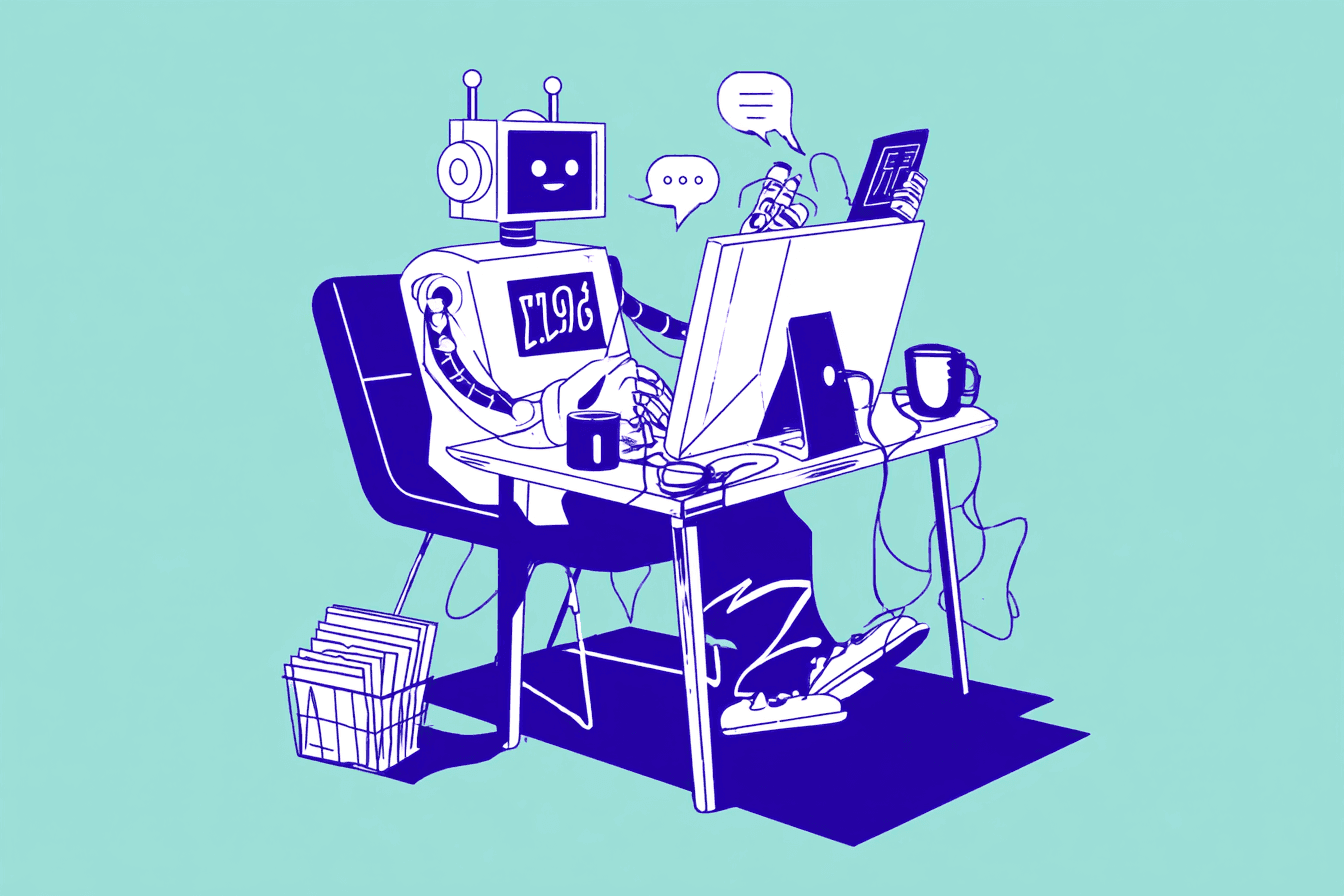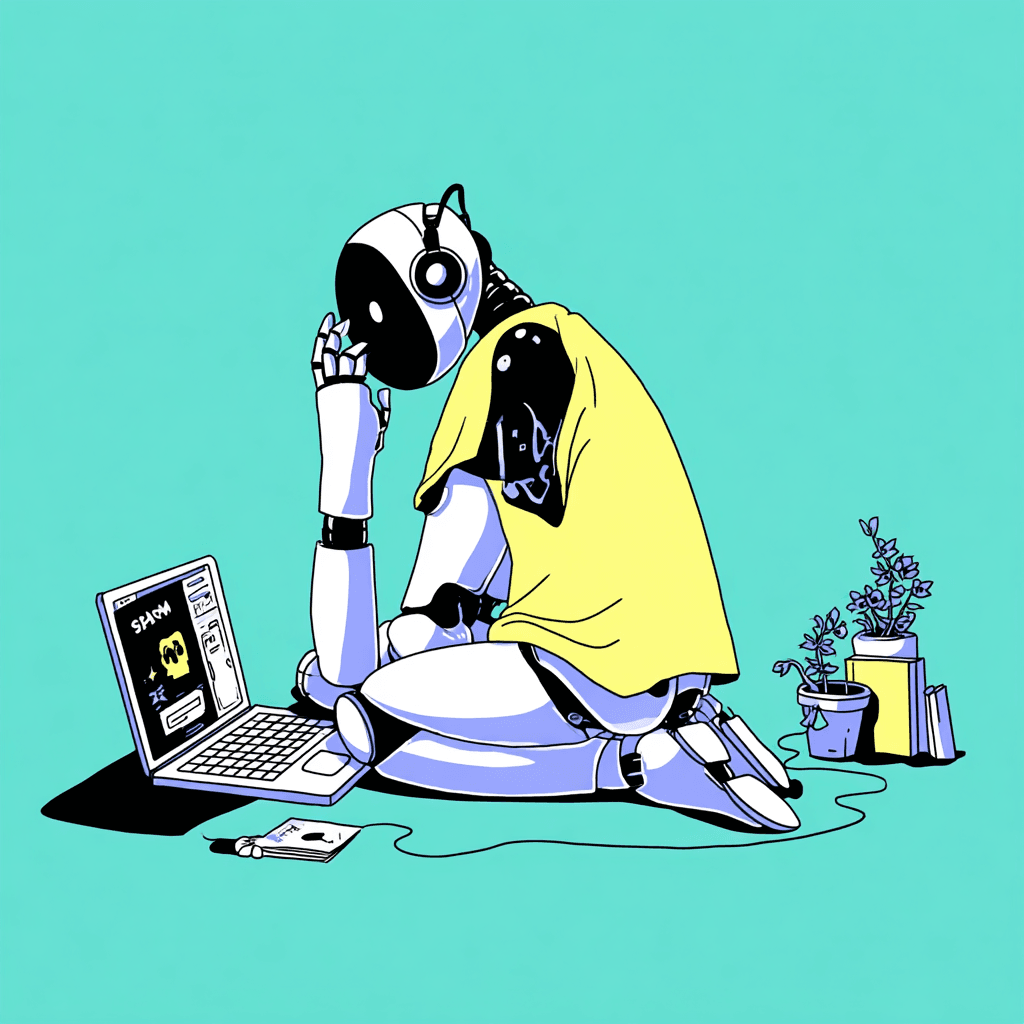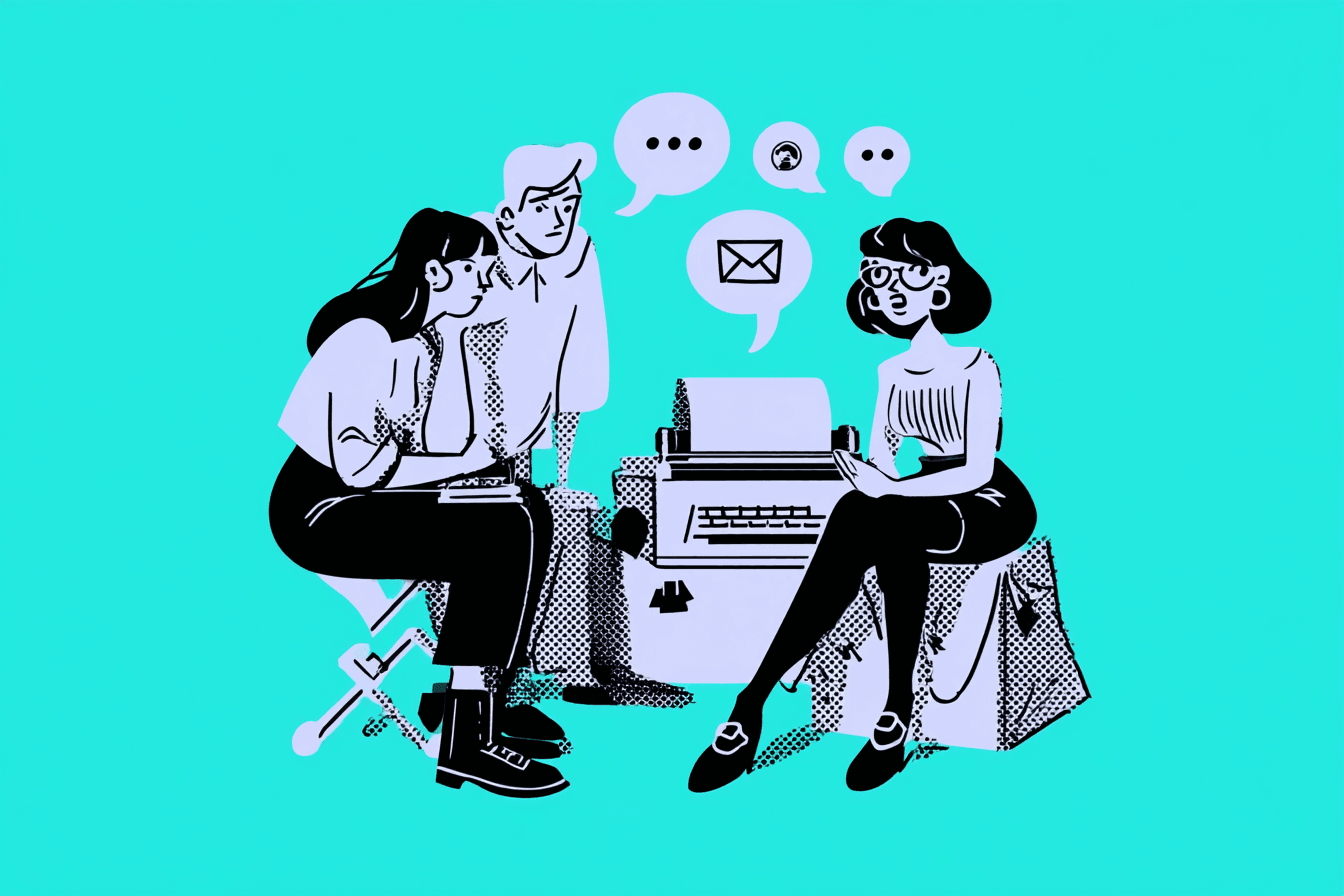A chatbot is an automated system that communicates with users in real time. Whether in customer service, on social media channels or in online shops – chatbots answer numerous questions without the need for a human employee. This way, companies can offer help 24 hours a day. But how does a chatbot actually work? We would like to clarify this and many other questions.
Definition and basics
Chatbots are being used by more and more companies. They can take on numerous tasks and thus support customer service in a variety of ways. Just a few years ago, chatbots were basically very simple, rule-based systems. Thanks to AI and natural language processing (NLP), however, much more intensive and user-friendly communication between users and chatbots is now possible.
The chatbot can help customers with a wide range of issues, which in turn leads to higher customer satisfaction and thus also contributes significantly to the company's success.
What exactly is a chatbot?
The term “chatbot” is made up of two parts:
- “Chat” refers to the conversation that the user has with the chatbot. “Bot” means ‘robot’. It is therefore not a conversation between two people, but a communication with an automatic program. For real-time communication with human agents, businesses often use live chat softwares.
A chatbot processes the text or voice input of users and then provides the appropriate answers. Chatbots come in different forms: from a simple text field on a website to more complex systems integrated into messaging apps like WhatsApp, anything is possible.
The chatbot's main function is usually to hold conversations with the user and to process their requests efficiently. Furthermore, chatbots can be used to identify weaknesses in the service, so that appropriate improvement measures can be taken.
The different types of chatbots
Chatbots can be designed very differently and can vary significantly in terms of the functions available and the technology used. So when we talk about a chatbot, we first need to clarify what type of bot it is so that we can better identify and understand the chatbot's capabilities.
In the following section, we'll introduce you to the two basic types of chatbots that you currently encounter on many websites and in chats.
Rule-based chatbots
These chatbots have fixed scripts and rules that they follow. They provide predefined answers to a variety of user questions. Rule-based chatbots are particularly suitable for simple tasks and frequently asked questions.
This type of chatbot can be used, for example, to provide customers with information on websites about opening hours or the range of services offered.
Rule-based chatbots provide only the information for which they have been programmed and rely on the user to ask the appropriate questions. They are a practical and cost-effective solution for companies that want to offer their customers self-service options.
Rule-based chatbots with pre-formulated questions
A purely rule-based bot relies on the user to ask questions that it can match to a specific answer from its database. Although it can match certain formulations to a specific question, it is far removed from human conversation.
If a user formulates their question in such a way that the chatbot does not recognize it, it will usually respond by saying that it cannot answer the question.
To avoid problems with language and phrasing, it can make sense with rule-based chatbots to provide users with pre-formulated questions that they then just have to click on. By showing users a kind of table of contents with possible questions from different areas, it is possible to clarify more problems. This in turn leads to more satisfied customers.
AI chatbots
Artificial intelligence (AI) is currently a hot topic, and this also applies to the development of chatbots. AI chatbots can do much more than just respond to pre-formulated questions. They have amazing capabilities for analyzing language and delivering complex answers. They can even adapt to the needs of users and anticipate which offers would be of interest to them.
With an AI chatbot, companies have the opportunity to provide highly personalized service. Since the bot can remember the users' responses, it is even possible to automatically improve the machine support over time.
Hybrid forms
The positive features of rule-based chatbots and bots based on artificial intelligence can be combined as needed.
Such hybrid systems can quickly deliver the information needed by the user based on predefined rules and forward more complex questions to their AI components, which can better handle the complexity of language and help the customer accordingly.
Areas of application for chatbots
Chatbots can be used in a variety of ways to help companies increase their efficiency. Whether it's a simple chatbot whose answers are based on predefined rules or complex AI bots that respond to the interested party in an almost “skilled” manner, chatbots can be found in more and more industries and will continue to gain in importance. We would now like to take a closer look at the most important areas of application.
Customer service
In the service sector, many companies can no longer imagine life without chatbots. They provide clear answers to frequently asked questions without the user having to wait for a free employee to help them. This increases customer satisfaction while also reducing costs.
By integrating the chatbot into the company's CRM system, it can be seamlessly incorporated into existing processes and can even provide personalized responses based on the customer's data.
Marketing
In marketing, chatbot provider also offer many advantages. For example, they can play personalized advertising and address users in a targeted manner. By analyzing user profiles and behavioral data, the chatbot can play the appropriate offers at the right time. One example of this is a chatbot that suggests special discount codes for products that might interest the user based on their previous purchasing behavior.
Another example of how the advantages of chatbots can be used in marketing is lead qualification. Here, the chatbot can collect initial information from the lead and then forward it to the sales department.
Sales
Particularly in e-commerce, a chatbot can be used to boost sales and increase the conversion rate. The chatbot can guide the user through the entire process, from product search to completing the order.
The products or services recommended by the chatbot can be optimally adapted to the individual needs of the user. This increases the likelihood that the user is really interested in them and will make a purchase.Chatbots can improve customer satisfaction .
Chatbots can be integrated into online shops from Shopify and other providers, where they act as virtual shopping assistants.
Healthcare
Chatbots are now also widely used in many areas of healthcare. They can answer many patient queries, saving them long waiting times and providing them with answers 24/7.
However, prescription of medication and specific treatment recommendations remain the sole preserve of doctors. When it comes to making appointments or taking initial symptoms, however, chatbots can provide valuable services. In some circumstances, a bot can also be used to monitor the patient's recovery, enabling the doctor to optimize future treatments.
Chatbots have numerous advantages
A chatbot can be of great benefit to a company, but also to its customers. Whereas in the past, when a request was made to the support team, it was necessary to wait until a service representative had time and a connection was established, today the chatbot can answer users' questions immediately. However, this is just one of the many advantages of chatbots, which we will now explain in more detail.
Saving valuable resources
With a chatbot, companies can ensure that personnel are deployed where they are really needed. For example, many questions about opening hours, delivery times or payment options can be answered automatically by a bot. If it is important or urgently desired by the customer to chat with a human, the chatbot can forward them to an employee.
High efficiency
Chatting with a bot is scalable. Even if there are a large number of user queries, the chatbot can handle them all immediately. If there are still employees available to competently process the really important queries, and thanks to the bot they don't have to deal with routine tasks unnecessarily, a high level of customer satisfaction is ensured.
Even complex user dialogues are easily possible thanks to chatbots based on artificial intelligence. There is no need to wait for a human employee, because many issues can be resolved efficiently without human intervention.
Availability around the clock
While humans need breaks and sleep, the chatbot does a good job 24 hours a day. This means that the user does not have to adapt to service hours, but can ask their question as soon as it arises.
This continuous availability is particularly useful for globally operating companies that have customers in different time zones. But for all other companies, too, a chatbot that can be contacted at any time can be a great improvement for the dialog with customers.
More satisfied customers
Critics often point out that chatting with a real person is important to many users when they have a question or a problem they want to clarify. This may well be true in many cases. But it is even more important to the user that their problem is resolved promptly. A chatbot can achieve just that.
Modern chatbots based on AI have little in common with the classic rule-based bots of the past. They are able to engage in a truly helpful conversation with the user and provide precise answers to specific questions as well as helpful explanations. If this is not possible, contact with a real employee can still be established.
Why an AI chatbot is usually the better choice
Compared to your exclusively rule-based chatbot, a bot that works with artificial intelligence offers several significant advantages. It can “understand” complex language and provide the user with the appropriate answer.
A modern AI bot is capable of conducting human-like conversations. This makes customers feel as though they are being taken seriously and well advised. However, if needed, it should still be possible to contact human employees by email, for example.
Artificial intelligence even allows chatbots to continuously improve their skills. This means that over time, the bot will become better and better at addressing user concerns in the chat and providing great help.
What AI systems do the bots rely on?
There are various chatbots that can achieve great things thanks to artificial intelligence. They have long since been able to do more than provide pre-written standard responses. In theory, some chatbots would even be able to write an entire e-book.
Well-known examples of chatbots include ChatGPT from OpenAI and Watson from IBM. These bots are capable of analyzing language so accurately that they can deliver better solutions than many customer service representatives.
However, the chatbots' responses always depend on their training data. Only if a company provides its chatbot with all the important information about its own range of services, solutions to problems and rules for appointments can it provide users with good advice.
Choosing the right chatbot for your business
Which chatbot is best for you depends on the tasks you want that chatbot to perform. For example, a chatbot for a doctor's website will have different requirements than a chatbot designed to support users of logistics software.
Even though artificial intelligence is now an extremely important component of most chatbots, it may be worthwhile to use a hybrid bot that has some automated elements. This way, recurring tasks can be completed according to fixed specifications, while users benefit from the advantages of AI when dealing with a more complex topic.
Create your own chatbot
Developing your own chatbot can be easier than you might think. Various technologies and tools are available to help you generate a chatbot that perfectly fits your needs.
Before you start developing a chatbot, however, it is important to think carefully about what the bot should be able to do and where the focus should lie. You can then implement these aspects using the appropriate software or have a professional create the chatbot for you.
The future of chatbot technology
The vast majority of experts firmly believe that chatbots will be used even more frequently in the future and will be able to perform even more tasks. The bots could be increasingly connected to websites, apps and other devices. This way, the chatbot can support users directly in what they want to do.
One major trend that is already emerging is personalization. When users have a question, they will no longer have to chat with a standard chatbot, but will be able to benefit from a bot that is specifically tailored to their individual needs, abilities and preferences.
It is not only the chatbots' understanding of text that is increasing. Impressive developments can also be observed in terms of emotional intelligence. The chatbots of the future will be able to respond to users' questions in such a way that they feel even more comfortable and are treated in exactly the right way, in the tone that they find particularly pleasant and desire in the current situation.
Will chatbots completely replace human service agents?
To understand whether a chatbot can truly replace all support agents, consider the question What is a chatbot? and the answers presented in this article.
Chatbots are designed to provide the right answer to specific questions and also to anticipate what other information the customer might need. But even though chatbots can now be integrated into numerous websites and their development continues to advance, they will not completely replace human work.
Chatbots are and will remain machines. They can deliver text that even addresses emotions, but real interpersonal interactions are not possible. The best solution for companies in the future will therefore continue to be a combination of human employees and chatbots. This way, they can benefit from both the typical human characteristics and the impressive functions that chatbot technology makes possible.








